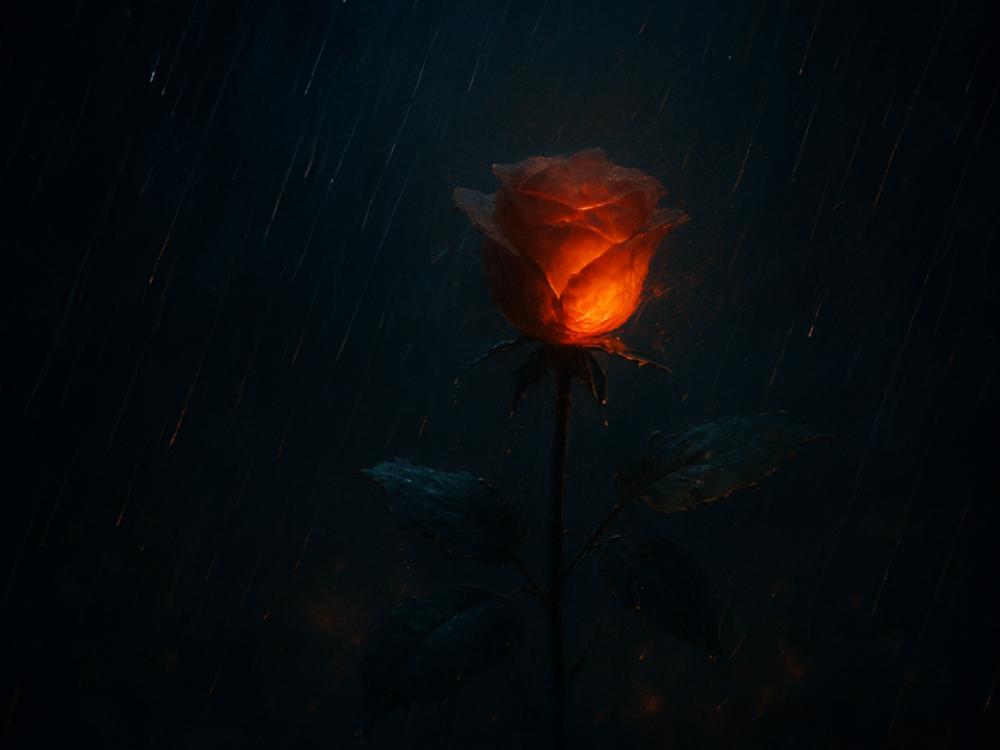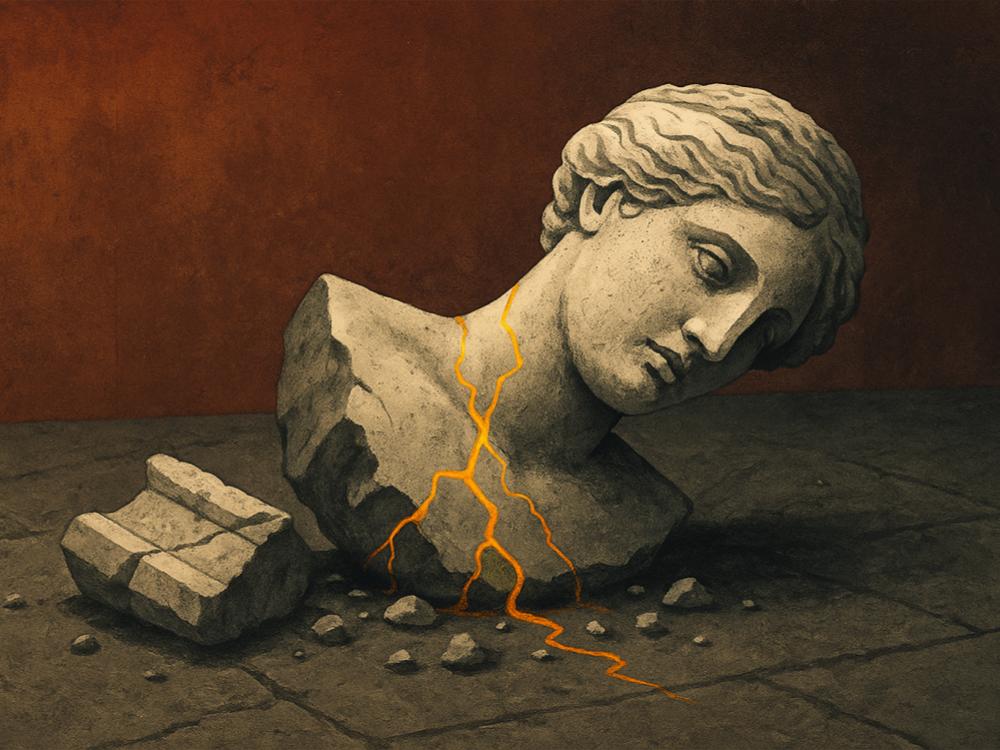Why do we Romanticize our Suffering?

The Romance of Hurt
There is a moment that repeats itself in classrooms, in kitchens, in the quiet of a phone screen at 1 a.m. Someone says they were happier once. Someone else nods as if happiness were a place on a map that we all left behind. We polish the past like a family heirloom until it shines brighter than anything on the table in front of us. The strange part is not that we miss what is gone. The strange part is how quickly we dress pain in velvet and call it beautiful. We tell ourselves that suffering made us deep, that sadness authenticated us, that grief proved we were real. The habit hides inside our stories. It hides inside our playlists and our photographs and the way we speak about childhood as if it were a single afternoon of sun. If we are not careful we become curators of a museum devoted to the person we used to be, and our days are spent polishing plaques rather than walking outside.
The reason it feels natural is that hurt is legible. Pain comes with a plot. Anyone can point to an ending and say that is where the break happened. Joy is harder to narrate because it does not resolve in a clean line. It disperses. It comes in tiny grains and asks you to notice the ordinary. Most of us are not trained to notice the ordinary. The algorithm does not reward it. The syllabus does not test it. We learn to keep a ledger instead, and the ledger measures intensity. When the past hurts more vividly than the present hums, the past wins. Romanticizing suffering is the interest payment on a debt we think we owe to intensity.
There is also a quieter psychology at work. Suffering lets us delay the next choice. If we tell ourselves we are in recovery, we can postpone the risk of becoming someone new. The language of wounds is a kind of shelter. It lets us say not yet without calling it fear. I used to live there more than I like to admit. I kept a personal archive of almosts and if-onlys and practiced telling the story with the best lighting. It made me feel wise. It also kept me small. The problem with a well curated ache is that it leaves very little oxygen for curiosity.
Turning the Lens
If the habit is hidden in our storytelling, the way out begins in storytelling too. The proposal is simple. Replace the romance of suffering with the craft of noticing. Make attention the main character. Give yourself a structure that rewards the ordinary the way a training loop rewards the outputs it cares about. This is not the sugar high of affirmation or a self-help trick that evaporates by Thursday. It is a design choice for a life that keeps moving even when the camera is off.
The core move is to separate meaning from drama. We can honor what hurt without enchanting it. We can remember without kneeling. I like to think of it as editing for truth rather than for theater. When you tell a friend about a hard year, try to describe what you learned in a sentence that does not require a violin. When you journal, write what happened in the morning without reaching for metaphor. Keep metaphor for the second paragraph. The first paragraph is for evidence. Then, once the facts are steady under your hand, let yourself ask the larger question. What changed in how you love. What changed in what you ask for. What changed in what you are willing to practice every day.
How to Practice It
Treat your attention like a muscle rather than a mood. Set a rule that every day must contain one deliberate act of noticing. The rule can be small. Identify the exact shade of light on the kitchen counter at 4 p.m. Learn the name of the weed that keeps surviving in the crack by the mailbox. When a conversation goes right, pause long enough to name the moment that made it go right. If you have to, make a ledger for this too, but let the ledger track subtleties rather than spikes. You are training yourself to be fluent in the tone of ordinary time.
Add a second rule that protects you from curating the past into a cathedral. When you tell a story about an older version of yourself, include one sentence that disrupts the romance. If you say college was the best, name one way it was not. If you say the relationship was perfect, name one tenderness you did not understand yet. The goal is not to dirty the memory. The goal is to let it breathe. A memory that glitters too much is a memory you cannot learn from.
Finally, formalize anticipation. Most people have rituals for remembering. Very few have rituals for imagining. Choose one day a week to write a paragraph in the voice of your future self. Do not predict the stock market or the weather. Speak instead about the kind of attention you hope to have. The habit inoculates you against the reflex that says the best is behind you simply because behind you is easier to see.
Does It Hold
Skeptics will say that suffering really does carve us into more complicated shapes, and they are not wrong. Pain refines. Loss clarifies. What I am resisting is the easy conclusion that refinement requires a constant burn. If the stove is always on high, you scorch the pan and call it depth. A better kitchen uses all the settings. There are days for searing. There are also days for a low simmer while you read a novel and remember what it feels like to have time. The point is not to abolish intensity. The point is to give intensity a job that serves the meal rather than steals the table.
Experience bears this out. People who keep gratitude practices are not naive. They are running a counter program against the brain's tendency to privilege the vivid. Artists who last do not wait for melodrama to grant permission. They build small rigs that capture and reuse the everyday. Athletes talk about learning to love the boring reps. Everyone who keeps going learns some version of the same lesson. The steady attention that builds a life is less romantic than pain, but it is more faithful.
The Line We Choose
Near the end of a conversation about grief, a hospice nurse once put it in a sentence I have carried for years. I had been circling the elegant sadness of a family story and she listened without judgment. Then she said this, very quietly.
Grief is a teacher, but it is not a home.
But what does this mean? It means we can learn without moving in. It means the classroom has a door. It means we are allowed to graduate. When we quote the pain of a season, we are not obligated to keep paying rent there. We can thank the lesson and take our books and walk out into a day that is not impressive, a day that will never fit on a poster, a day whose only achievement is that it was fully lived.
The Commitment
This is not a rejection of depth. It is a bet on continuity. Keep your stories generous with facts. Keep your rituals pointed toward noticing. Keep your imagination trained on the next version of yourself who will need you to have saved a little courage. When nostalgia arrives, let it sit at the table and tell a story, but do not hand it the deed to the house. When suffering walks in, offer it water and listen, but do not let it redecorate.
You do not have to stop loving the person you were to love the hour you are in. You do not have to strip the past of color to see the present clearly. You only have to decide what you will reward with your attention. If you pay for pain with more attention than you pay for anything else, it will keep sending invoices. If you fund the ordinary instead, it will start to compound.
When the room is quiet and the old line rises in your mind, there was once a time, let it pass through and keep moving. The time you are in will soon be that sentence for someone you have not met yet, the version of you who will look back and offer thanks for the day you stopped polishing the museum and walked outside.



